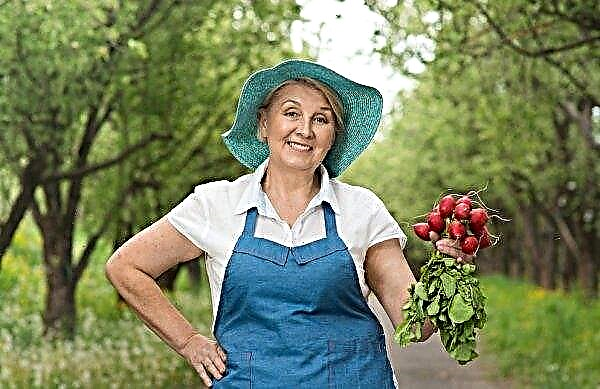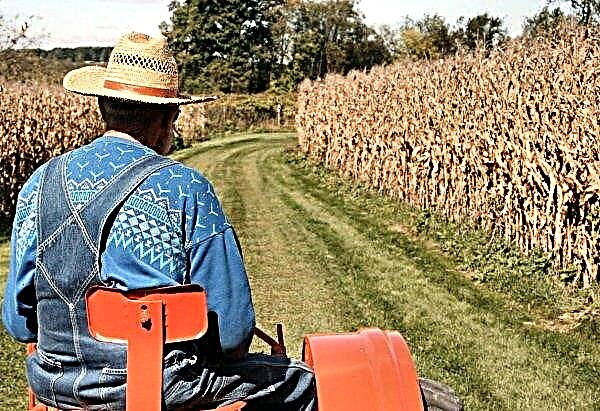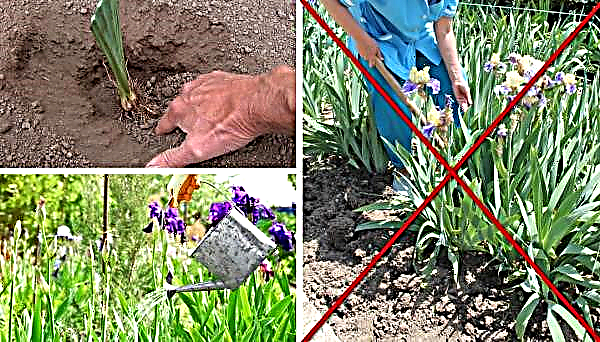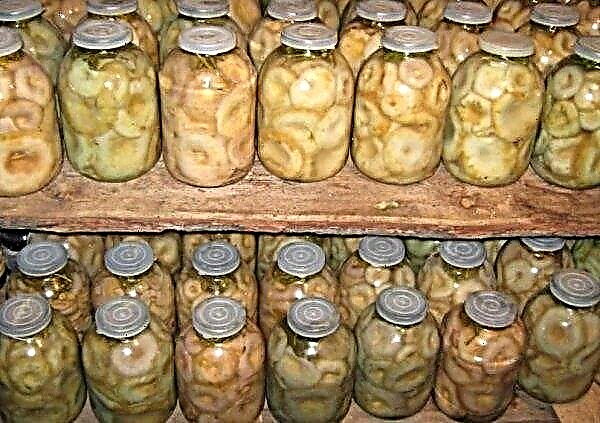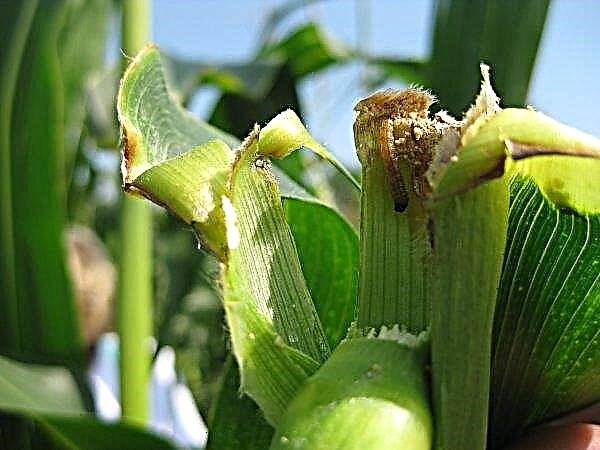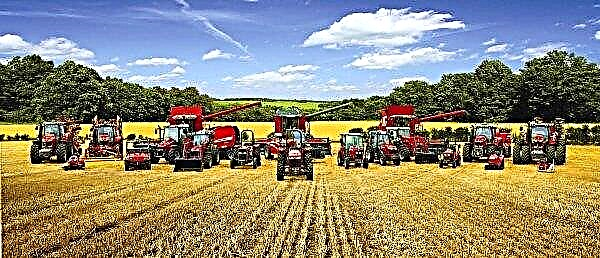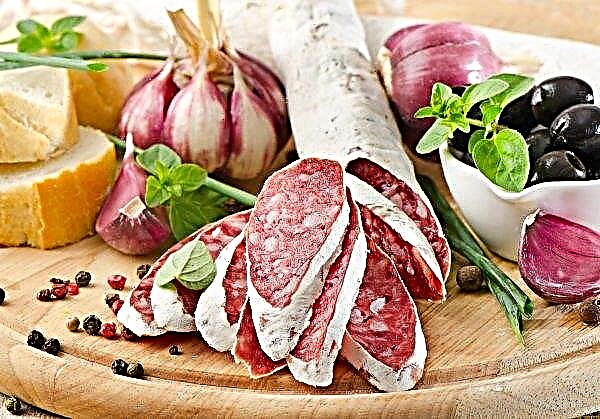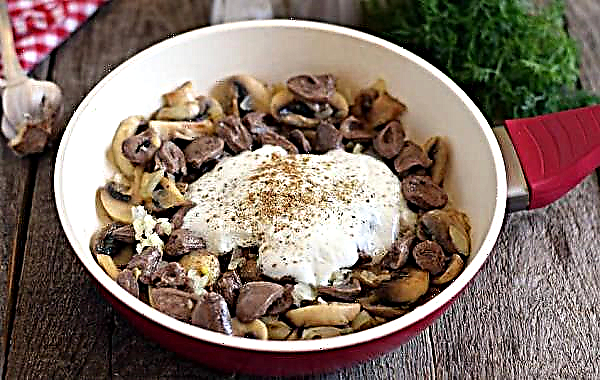For the full development of the body of domestic hens, you need a quality and balanced diet. At any time of the year, the bird perfectly perceives fresh greens. In the cold season, to obtain such food is problematic and not cheap, so the solution can be found in independent germination of seeds of grain crops.
Why give germinated wheat to chickens?
Germinated cereal culture is very useful for pets, as it contains a large number of nutrients that are essential for winter vitamin deficiency. In the cold period, the amount of this feed in the daily diet can be from 10 to 50%.
Useful properties and harm
There are many useful properties of this type of nutrition:
- the presence of a large number of vitamins of groups B and E, amino acids, protein;
- the bird's appetite rises;
- the number of laid eggs increases and their incubation quality improves;
- the nutritional value of eggs is also getting better;
- increases immunity to infectious diseases.
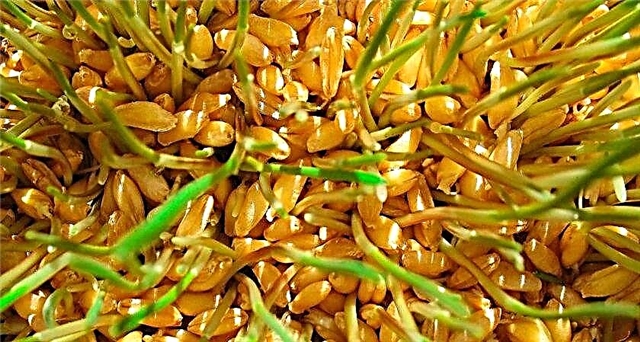 The harm can only be from overeating sprouts - as well as the abuse of any other wholesome food. The thing is that in the germinated grains a huge amount of iron accumulates. For a relatively small mass of chicken, at the same time, the “dose” of this trace element can be detrimental to health. To prevent this from happening, you should not seduce the bird with a large amount of such food, limiting yourself to 30% of the daily portion of food.
The harm can only be from overeating sprouts - as well as the abuse of any other wholesome food. The thing is that in the germinated grains a huge amount of iron accumulates. For a relatively small mass of chicken, at the same time, the “dose” of this trace element can be detrimental to health. To prevent this from happening, you should not seduce the bird with a large amount of such food, limiting yourself to 30% of the daily portion of food.Important! Germinated food is also very useful for chicks who get vitamins from it. This reduces the mortality rate among young animals and reduces the number of developmental delays.
Indications and contraindications
The use of germinated wheat has the following indications:
- poor appetite;
- susceptibility to colds and viral diseases;
- the presence of bone and joint ailments;
- hormonal problems;
- the period of egg laying and hatching.
Product contraindications are as follows:
- upset gastrointestinal tract;
- lack of other nutrients in the diet;
- individual intolerance to any trace element from the composition of the feed.
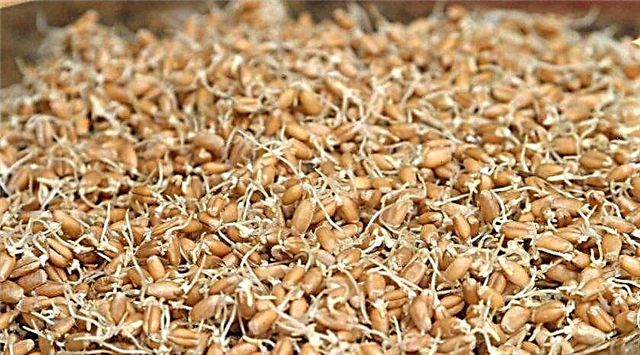
How to choose and prepare wheat for germination for chickens
Not every grain is suitable for germination, so when choosing it, you need to consider several qualitative factors:
- integrity - For the germination of unrefined wheat without traces of processing;
- appearance - the grain should not be damaged and uniform throughout the surface;
- purity - lack of influence of pesticides and other powerful fertilizers;
- lack of processing - heat treatment was not applied to the seeds;
- freshness - lack of moisture, charm, excess odors.
Before germinating the grain, it is necessary to sort, sift, rinse several times in water, removing the empty pop-up. The dried material is ready for further use.
Step-by-step instruction for wheat germination at home
The growing technology consists of three simple steps:
- Soak.
- Exposure
- Laying on the fabric.
Each stage requires simple equipment and materials.
Video: wheat germination for laying hens
Basic soaking technologies
To soak the grain, it is better to use containers made of neutral material - glass, ceramic or enameled. Tanks made of stainless steel, aluminum, copper or plastic are extremely undesirable, as they can react with components released by germinating grain. Soaking is done in a wide bowl, where the grain is poured with warm water (about 40 ° C). Water should cover the material with a layer of up to 2 cm. If the wheat was stored in a cold room in winter, then it needs to do some heat shock - steam it with water with a slightly higher temperature.
Important! When soaking, it is worth using the amount of food that the chickens eat immediately, since the product is extremely perishable.
In this case, the main thing is not to overdo it and prevent overheating - the temperature of the mixture should not be more than 40 ° C. Another method of soaking involves the use of cold water and covering the container with a film or a lid. After 8-10 hours, the water is replaced and soaking lasts another 8-10 hours.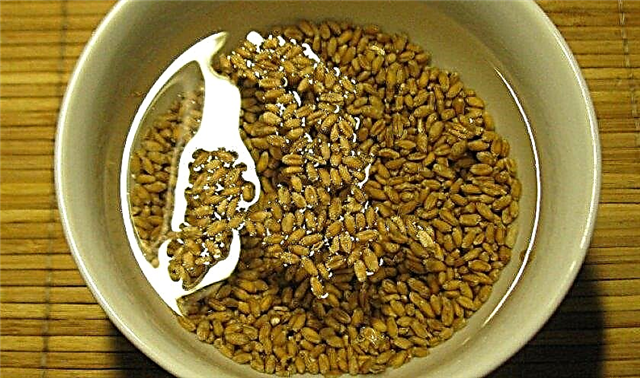
Excerpt
The container with soaked grains should be covered with a lid or cloth and set aside in a dark place. The temperature in such an “incubator” must be warm in order to stimulate the raw materials to grow. This stage lasts from 12 to 17 hours in complete rest - no other manipulations are necessary. After this, the liquid is drained and the wheat is ready for germination.
Spreading grains
The layout of grains for germination is performed in the following sequence:
- in a wide shallow container, oilcloth or plastic film is laid to the bottom;
- on the surface of the film a small layer of seeds lie;
- a damp cloth made of a natural substance (linen, cotton) is laid on top;
- as the fabric dries, it is wetted.
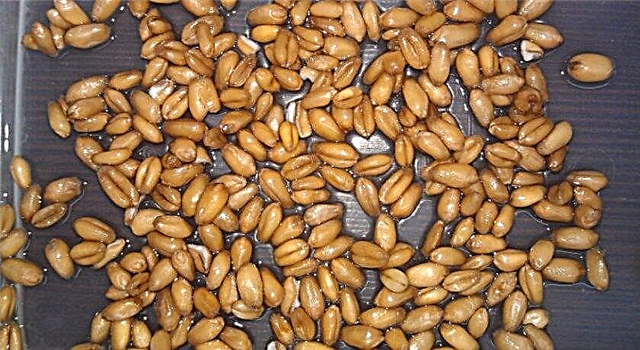
Extra Growing Tips
It is not always possible to create ideal conditions for growing crops at home. Modern technology and the savvy of farmers can help speed up and improve the process:
- Lighting - one of the main factors affecting growth. With good lighting, the grain sprouts at an accelerated pace.
- Humidity - This indicator, with moderation, helps to develop sprouts from grains.
- Fertilizers - with the help of fertilizers, the development of seeds is significantly accelerated.
- Minerals - accelerate the metabolism in the body of the bird.
How to feed chickens with germinated grain
Juicy wheat shoots appear already on the second day after soaking. You can feed the chickens now, or you can wait another day for the sprouts to grow stronger and gain more nutritional strength.
Did you know? Even a small sprout - up to 6 mm long, includes a huge amount of vitamin A. Such sprouts are sheared by scissors and placed in feeders. And wheat is re-soaked to get a “second crop”.
Daily feeding
Sprouted wheat is a delicious product, so pets need to be pampered with it no more than 2-3 times a week. This applies not only to laying hens and chickens hatching offspring - any bird will be happy with fresh, tasty and nutritious food.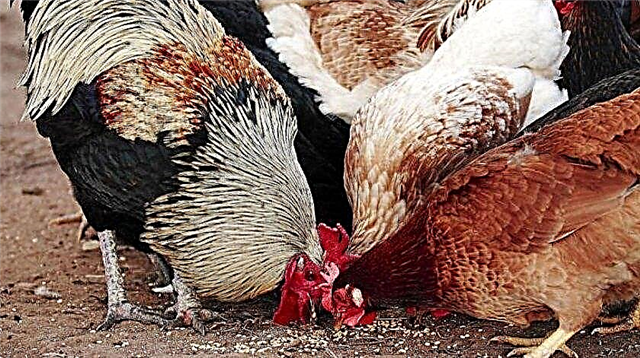 The period for such feeding is late autumn, winter and early spring, when the chicken body needs vitamins, but in normal feed they are not enough. A small amount of sprouted raw materials is added to the daily serving of food.
The period for such feeding is late autumn, winter and early spring, when the chicken body needs vitamins, but in normal feed they are not enough. A small amount of sprouted raw materials is added to the daily serving of food.
Litter for the night
An interesting technique is feeding the bird by pouring food directly onto a deep litter in the evening. This feeding method has three positive factors for chickens:
- the grains in the warm litter begin to churn and produce excess heat that warms the birds;
- when it gets dark early in the cold season, the pets still do not want to sleep, and they have nothing to do - they wander around the litter, hatching grains sprinkled with a caring owner;
- Finding and hatching grains from the litter helps to loosen it, reducing moisture in the thickness of the layer.
Did you know? Serving quality food stimulates pets to some kind of competition when they strive to get ahead of each other near the feeder. Sprouted wheat is a good competitive factor for laying hens, which then lay large eggs.
Recommendations for feeding sprouted grain to laying hens
With all its useful properties, feeding sprouted grain should be closely monitored:
- layers need to be interested in food;
- a well-fed bird will not rummage in the litter, and a hungry one will eat the necessary norm;
- the nutrition of individuals prone to obesity must be controlled;
- the amount must be dosed and mixed with other feeds so that the hens ate a variety of foods.
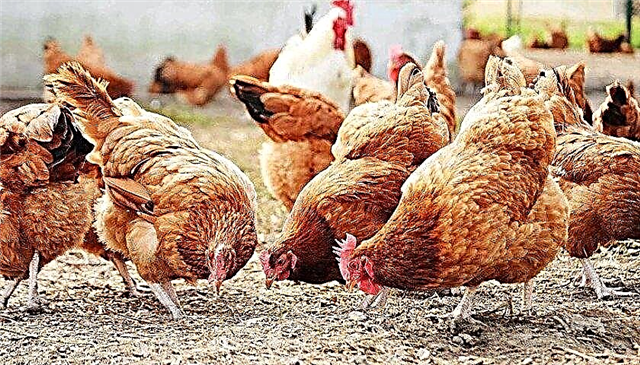 Feeding chickens with wheat germ is an excellent preventive measure against many diseases. Birds are happy to eat this diet food and thank their hosts for good egg production and good health.
Feeding chickens with wheat germ is an excellent preventive measure against many diseases. Birds are happy to eat this diet food and thank their hosts for good egg production and good health.

